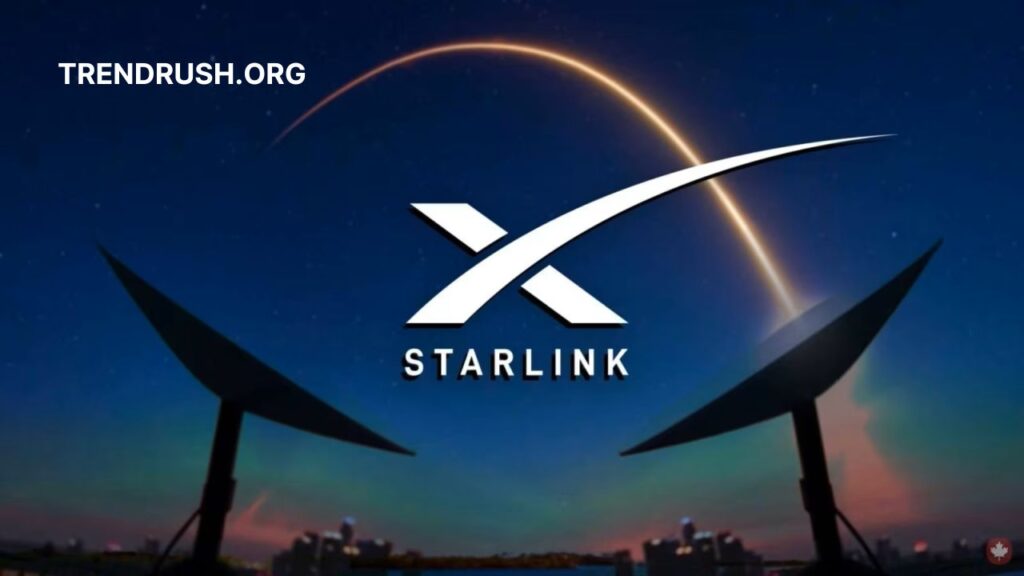Physical Address
304 North Cardinal St.
Dorchester Center, MA 02124
Physical Address
304 North Cardinal St.
Dorchester Center, MA 02124

The Starlink satellite network, developed by SpaceX, is transforming global internet access, bringing high-speed connectivity to even the most remote locations. With thousands of Starlink satellites in orbit, the project aims to provide a low-latency, high-speed broadband network worldwide.
In this comprehensive guide, we’ll explore how Starlink satellites work, how many Starlink satellites are in space, recent launches, visibility, crashes, and upcoming innovations. We’ll also discuss the T-Mobile and Starlink beta testing of satellite internet service and answer key questions like “Can a regular cell phone be used with Starlink satellites?”

Starlink satellites are low-Earth orbit (LEO) satellites designed to deliver high-speed internet. Unlike traditional geostationary satellites that orbit at 35,000 km, Starlink satellites operate much closer—at around 550 km—ensuring reduced latency and faster connectivity.
Each Starlink satellite is equipped with phased-array antennas and laser links, enabling inter-satellite communication and dynamic data routing. These satellites are constantly updated, with SpaceX planning upgrades for 2-gigabit speeds.
Starlink satellites connect directly to ground stations and user terminals, providing an internet connection without relying on traditional infrastructure. They work in a mesh network, where data can hop between satellites to reach its destination efficiently.
As of 2025, SpaceX has launched over 5,000 Starlink satellites, making it the largest satellite constellation in history. The company has plans to expand this to 42,000 satellites in the coming years, significantly increasing coverage and reliability.
Recent launches include:
SpaceX has plans to expand its mega-constellation to around 42,000 satellites. The expansion aims to improve connectivity in remote areas, enhance speeds, and create a more resilient internet network.
Yes! Many people have reported sightings of Starlink satellites in the night sky, often appearing as a “Starlink satellite train“—a line of bright moving dots. If you’re wondering, “Will Starlink see satellites from my rooftop?”, the answer depends on your location, light pollution, and weather conditions.
One of the most exciting developments in satellite communication is the T-Mobile and Starlink beta testing of satellite internet service. This breakthrough technology allows regular cell phones to connect directly to SpaceX’s Starlink direct-to-phone satellites, eliminating dead zones.
This innovation is set to revolutionize mobile connectivity, making it possible to access calls, messages, and even basic internet functions without traditional cell towers.
Recent reports have confirmed multiple Starlink satellite reentry fireballs, with Starlink-5693 satellite debris lighting up the Midwest sky during reentry. These fiery events occur when older Starlink satellites fall out of orbit and burn up upon atmospheric entry.
To monitor upcoming reentries, space enthusiasts track Starlink satellite video feeds and real-time satellite paths.
With SpaceX Falcon 9 launch Starlink satellites missions happening regularly, the Starlink project is continuously expanding. SpaceX has also announced:
Yes! Pictures of Starlink satellites show them as bright moving objects in the sky.
Yes, Starlink satellites move rapidly across the sky due to their low-Earth orbit.
They typically move west to east, following planned orbital routes.
No, Starlink satellites are not geostationary—they move continuously in LEO.
No, Starlink satellites do not have onboard cameras for public use.
You need a Starlink satellite dish, router, and an active subscription. Download the Starlink app for easy setup.
Currently, Starlink satellite TV is not available, but SpaceX may expand services in the future.
Starlink satellites are revolutionizing global internet connectivity, offering a solution to rural internet issues, mobile connectivity gaps, and high-speed broadband demand. With continuous upgrades, new launches, and innovative partnerships like T-Mobile’s Starlink satellite internet beta, the future of satellite internet looks brighter than ever.
For the latest updates, visit Starlink Technology and stay informed about upcoming launches and developments!
Did you find this guide helpful? Let us know in the comments! 🌍✨